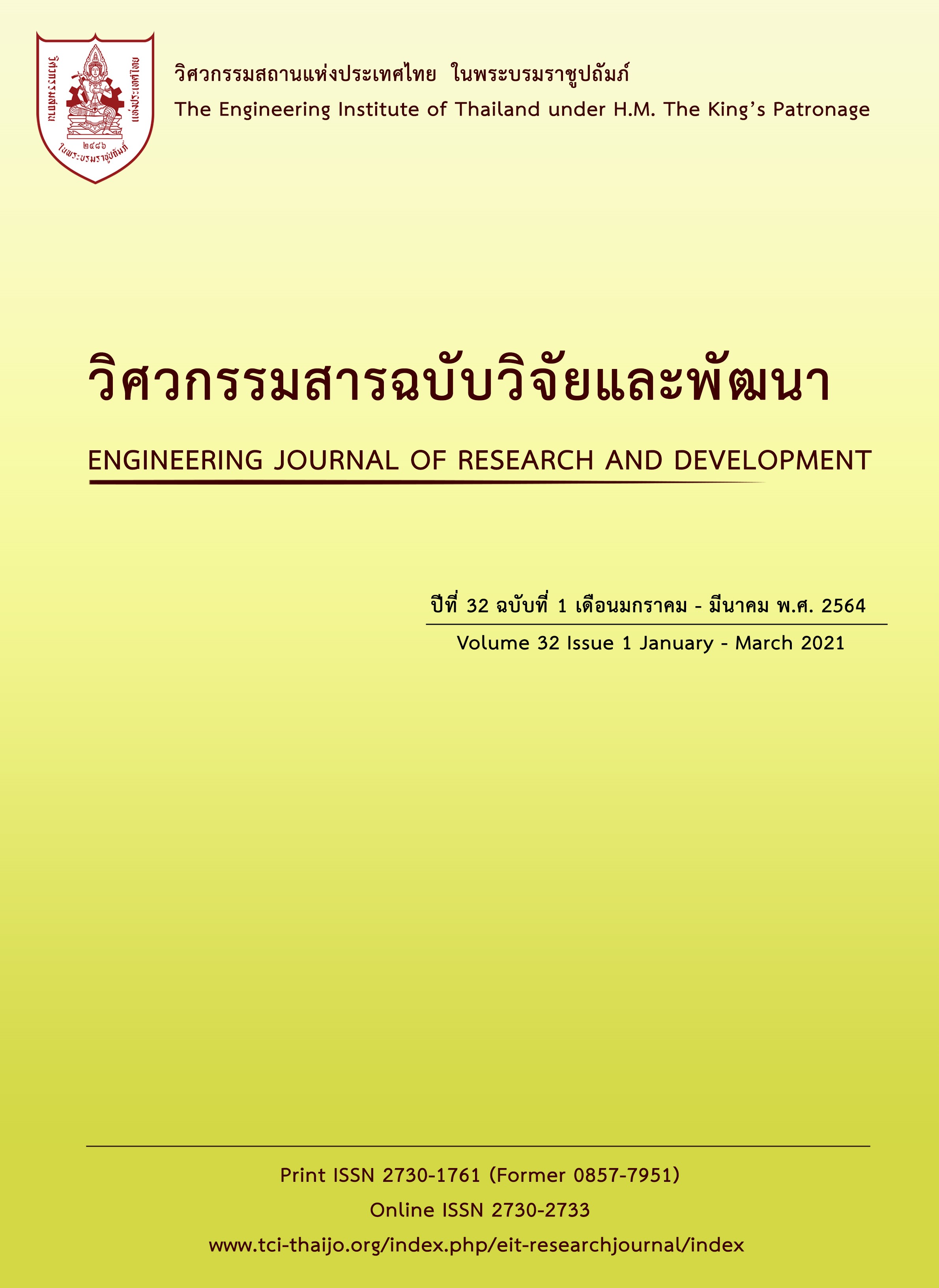RELAXATION ANALYSIS OF STEEL WIRE FOR PRESSTRESSED CONCRETE
Main Article Content
Abstract
This research focuses on analyzing the relaxation value of steel wire for prestressed concrete from the testing method according to the Thai Industrial Standards TIS 95-2540 and proving the significance of the wire strain rate. The test results showed that When the initial pulling force is 70% of the maximum pull force Wires with larger diameters have a higher initial pulling force. The rate of pulling force is inversely proportional to the duration. For the first 10 hours, The rate of pulling force has the highest value. The testing of 4, 5 mm diameter chevron wires and 7 mm stress mark types provides an average relaxation of 1,000 hours, which is 2.63%, 2.06% and 2.03% respectively, which is in line with the criteria. For the first 10 hours, Strain rate of all 3 sizes of wire are as high as 0.8x10-4 - 3.7x10-4% per hour which is higher than the range of 100 hours and 1000 hours which is 0.8x10-5 - 3.2x10-5% per hour and 1x10-9 - 1.6x10-9% per hour, respectively Details on the methodology and results of the trial will be used as a reference for the standard improvement
Article Details
The published articles are copyright of the Engineering Journal of Research and Development, The Engineering Institute of Thailand Under H.M. The King's Patronage (EIT).
References
304.
[2] Ravera, P. et al. Influence of aging on the relaxation and internal friction properties of cold drawn pearlites. Scripta Metallurgica, 1984, 18(11), pp. 1313-
1318.
[3] Suarez, F.net al. Influence of the storage conditions on prestressing steel relaxation losses. Materials de Construction, 2012, 62(308), pp. 531- 546.
[4] Zdenek, P. et al. Relaxation of prestressing steel at varying strain and temperature: viscoplastic constitutive Relation. Journal of Engineering Mechanics,
2013, 139, pp. 814-823.
[5] Sitthipong, S. et al. Relaxation Assessment of Steel Wire Strand for Prestressing of Concrete. Rajamangala University of Technology Tawan-ok
Research Journal, 2020, 13(1), pp. 71-81.
[6] Torill, Y. et al. Relaxation of PC Steel Wire. Journal of the Japan Society for Testing Materials, 1962, 11(111), pp. 768-774.
[7] Zeren A. and Zeren M. Stress relaxation properties of prestressed steel wires. Journal of Materials Processing Technology, 2003, 141, pp. 86-92.


